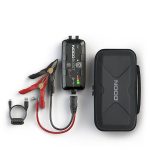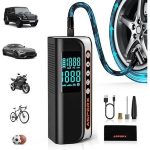Keeping your motorcycle helmet clean and well-maintained is crucial for both safety and comfort. A clean helmet not only ensures clear vision and a fresh feel but also prolongs its lifespan. In this comprehensive guide, we’ll walk you through the steps on how to clean and wash your motorcycle helmet effectively. You’ll discover the best practices, tips for different helmet types, and how to avoid common mistakes. Whether you’re a seasoned rider or a new enthusiast, this article will help you maintain your helmet in top condition.
Understanding the Importance of Cleaning Your Motorcycle Helmet
Why Regular Cleaning Matters
Cleaning your motorcycle helmet is more than just a matter of aesthetics. How to clean and wash motorcycle helmet? Regular cleaning helps maintain visibility by removing dirt, grime, and bug residue that can obstruct your view. It also prevents unpleasant odors and reduces the buildup of bacteria, which can cause skin irritations or infections. Additionally, a clean helmet ensures that its protective features, like the EPS liner, remain effective.
Benefits of a Well-Maintained Helmet
- Enhanced Safety: Dirt and grime can damage the helmet’s outer shell and interior padding, compromising its ability to protect you in an accident.
- Improved Comfort: Regular cleaning removes sweat and grime, which can cause irritation and discomfort during rides.
- Extended Helmet Life: Proper maintenance prevents wear and tear, extending the lifespan of your helmet.
Preparing for the Cleaning Process
Gathering the Right Supplies
How to clean and wash motorcycle helmet? Before you start cleaning your helmet, make sure you have the following supplies:

- Mild detergent or helmet-specific cleaner
- Soft microfiber cloths
- A small brush or soft sponge
- Warm water
- A bucket or basin for washing
- A gentle disinfectant (optional)
Removing the Helmet’s Removable Parts
Most motorcycle helmets have removable components, such as the inner lining and cheek pads. These parts should be removed before cleaning to ensure a thorough job. Follow these steps:
- Detach the Lining: Carefully remove the inner lining and cheek pads according to the manufacturer’s instructions.
- Check for Care Instructions: Refer to the helmet’s user manual for any specific care instructions for removable parts.
Cleaning the Helmet Shell
Washing the Exterior
- Prepare the Solution: Fill a bucket or basin with warm water and add a small amount of mild detergent or helmet-specific cleaner.
- Gently Clean the Shell: Use a soft microfiber cloth to wipe down the helmet’s exterior. Avoid using abrasive materials that could scratch the surface.
- Rinse Thoroughly: Rinse the helmet shell with clean water to remove any soap residue.
Dealing with Stubborn Stains
For stubborn stains or bug residue, use a small brush or soft sponge with a little bit of the cleaning solution. Gently scrub the affected areas until the stains are removed.
Cleaning the Helmet Lining and Cheek Pads
Hand Washing
- Prepare the Solution: Use warm water mixed with a mild detergent.
- Soak and Clean: Submerge the removable lining and cheek pads in the solution and gently scrub them with your hands or a soft brush.
- Rinse and Dry: Rinse the parts thoroughly with clean water and gently squeeze out excess water. Avoid wringing them out, as this can damage the padding.
Drying the Lining
- Air Dry: Lay the liner and cheek pads flat on a clean towel and allow them to air dry. Do not expose them to direct sunlight or heat sources, as this can warp or degrade the materials.
Cleaning the Helmet Visor
Removing and Cleaning the Visor
- Detach the Visor: Follow the manufacturer’s instructions to carefully remove the visor from the helmet.
- Clean with Care: Wash the visor with warm water and a mild detergent. Use a soft cloth to avoid scratches.
- Dry Thoroughly: Dry the visor with a clean, dry microfiber cloth before reattaching it to the helmet.
Tips for Preventing Fogging
Consider applying an anti-fog treatment to the inside of the visor to prevent fogging during rides. Ensure the visor is completely dry before applying any treatments.

Reassembling the Helmet
Reattaching the Lining and Cheek Pads
Once all parts are completely dry, carefully reassemble the helmet by attaching the inner lining and cheek pads. Make sure everything is securely in place and aligned correctly.
Final Inspection
Before putting the helmet back on, inspect it to ensure it is clean, dry, and free of any leftover cleaning products or residue.
Tips for Maintaining Helmet Hygiene
Regular Cleaning Schedule
To keep your helmet in the best condition, establish a regular cleaning schedule. Ideally, clean the helmet every few weeks or after every few rides, especially if you’ve been riding in harsh conditions.
Proper Storage
Store your helmet in a cool, dry place away from direct sunlight and extreme temperatures. Use a helmet bag or cover to protect it from dust and accidental damage.
Common Mistakes to Avoid
Using Harsh Chemicals
Avoid using harsh chemicals, solvents, or abrasive materials, as they can damage the helmet’s materials and finish.
Over-Washing
Over-washing or using excessive amounts of water can affect the helmet’s padding and protective features. Stick to a gentle cleaning routine.
Ignoring Manufacturer’s Instructions
Always follow the manufacturer’s cleaning and care instructions to ensure you don’t void any warranties or damage the helmet.
How to Handle Specialized Helmet Types
Cleaning Full-Face Helmets
Full-face helmets offer comprehensive protection, and cleaning them involves special attention:
- Disassemble Carefully: Remove the visor, cheek pads, and inner lining.
- Clean the Shell: Follow the standard cleaning procedure for the exterior.
- Wash Lining and Padding: Hand wash the removable parts, paying extra attention to areas that come into direct contact with your skin.
- Reassemble: Ensure everything is completely dry before reattaching the components.
Cleaning Modular Helmets
Modular helmets combine features of full-face and open-face helmets. Here’s how to clean them:
- Open the Helmet: Flip up the front portion to access the inner parts.
- Clean the Interior: Remove and wash the liner and cheek pads.
- Wipe the Shell: Clean the outer shell with a gentle detergent and a microfiber cloth.
- Reattach Components: Ensure all parts are dry and securely fastened before use.
Cleaning Off-Road Helmets
Off-road helmets are designed for rugged conditions and may require extra care:
- Remove Dirt: Before washing, use a brush to remove loose dirt and debris.
- Clean Thoroughly: Wash the shell and interior using a mild detergent and soft brush. Off-road helmets often have more ventilation and can collect more grime.
- Dry Properly: Let all parts air dry completely before reassembling.
How to Address Helmet Odor and Disinfect
Tackling Persistent Odors
- Use a Mild Deodorizer: Spray a helmet-safe deodorizer on the inner lining. Make sure it’s designed for use on helmet materials.
- Hand Wash the Lining: Regular washing with a mild detergent can help prevent odors from building up.
- Dry and Air Out: Allow the helmet to air out in a well-ventilated area after cleaning.
Disinfecting Your Helmet
- Use Helmet-Specific Disinfectants: Apply a disinfectant designed for use on helmet materials to kill bacteria and prevent odors.
- Avoid Harsh Chemicals: Do not use bleach or strong chemicals as they can damage the helmet’s materials.
- Dry Completely: Ensure the helmet is thoroughly dry before wearing it again.
Troubleshooting Common Issues
Helmet Fogging
- Apply Anti-Fog Treatments: Use anti-fog sprays or inserts to prevent visor fogging.
- Ensure Proper Ventilation: Keep ventilation channels clear and use helmets with built-in anti-fog features.

Helmet Scratches
- Polish Light Scratches: Use a helmet-specific polish to buff out minor scratches.
- Replace Damaged Parts: For deep scratches or damage, consider replacing the visor or helmet components.
Sticky Residue
- Use a Safe Cleaner: Remove sticky residue with a mild adhesive remover designed for use on helmets.
- Clean Thoroughly: Ensure all residue is removed and the helmet is washed thoroughly after treatment.
Final Tips for Helmet Maintenance
Regular Inspections
- Check for Damage: Regularly inspect your helmet for any signs of damage or wear.
- Replace When Necessary: Replace your helmet if it shows signs of significant wear or has been involved in an accident.
Following Manufacturer Guidelines
- Refer to the Manual: Always consult the manufacturer’s care instructions for specific recommendations and warranty information.
- Use Recommended Products: Stick to products and cleaners recommended by the helmet manufacturer to avoid damage.
Conclusion
Keeping your motorcycle helmet clean and well-maintained is essential for safety, comfort, and longevity. By following these detailed steps on how to clean and wash your motorcycle helmet, you can ensure that your helmet remains in top condition, providing optimal protection and a pleasant riding experience. Regular maintenance will not only enhance your safety but also extend the life of your helmet.


